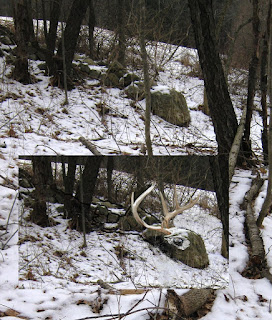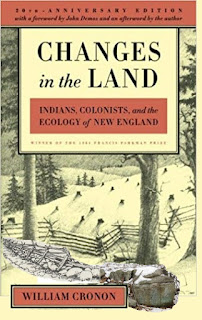An inadequate effort has been made to search for ancient fields
“To observers in the sixteenth century, the most visible
manifestation of the Native American landscape must have been the cultivated
fields, which were concentrated around villages and houses,” writes William M. Denevan
in the Pristine Myth: The Landscape of the Americas in 1492. “Most fields are
ephemeral, their presence quickly erased when farmers migrate or die, but there
are many eye-witness accounts of the great extent of Indian fields. On
Hispaniola, Las Casas and Oviedo reported individual fields with thousands of
montones (Sturtevant 1961, 73j. These were manioc and sweet potato mounds 3-4 m
in circumference, of which apparently none have survived. In the Llanos de
Moios in Bolivia, the first explorers mentioned percheles, or corn cribs on
pilings, numbering up to 700 in a single field, each holding 30-45 bushels of
food (Denevan 1966, 98). In northern Florida in 1539, Hernando de Soto's army
passed through numerous fields of maize, beans, and squash, their main source
of provisions; in one sector, 'great fields . . . were spread out as far as the
eye could see across two leagues of the plains (Garcilaso de la Vega 1980, (2)
182; also see Dobyns 1983, 135-46).
It is difficult to obtain a reliable overview from such descriptions. Aside from possible exaggeration, Europeans tended not to write about field size, production, or technology. More useful are various forms of relict fields and field features that persist for centuries and can still be recognized, measured, and excavated today. These extant features, including terraces, irrigation works, raised fields, sunken fields, drainage ditches, dams, reservoirs, diversion walls, and field borders number in the millions and are distributed throughout the Americas (Denevan 1980; see also Doolittle and Whitmore and Turner, this volume). For example, about 500,000 ha of abandoned raised fields survive in the San Jorge Basin of northern Colombia (Plazas and Falchetti 1987, 485), and at least 600,000 ha of terracing, mostly of prehistoric origin, occur in the Peruvian Andes (Denevan 1988, 20). There are 19,000 ha of visible raised fields in just the sustaining area of Tiwanaku at Lake Titicaca (Kolata 1991,109) and there were about 12,000 ha of chinampas (raised fields) around the Aztec capital of Tenochtitlan (Sanders, et al. 1979, 390). Complex canal systems on the north coast of Peru and in the Salt River Valley in Arizona irrigated more land in prehistory than is cultivated today. About 175 sites of Indian garden beds, up to several hundred acres each, have been reported in Wisconsin (Gartner 1992). These various remnant fields probably represent less than 25 percent of what once existed, most being buried under sediment or destroyed by erosion, urbanization, plowing, and bulldozing. On the other hand, an inadequate effort has been made to search for ancient fields…”
The Pristine Myth: The Landscape of the Americas in 1492 - William M. Denevan
https://jan.ucc.nau.edu/~alcoze/for398/class/pristinemyth.html
My observations are centered in and around where I live, a
contact era village site in a still rural section of
town (which is a rare
thing in itself, something one would tend to think might attract some archaeological
investigation). The "stone walls" here have a high degree of
probability of being part of those "relict fields and field features that
persist for centuries and can still be recognized, measured, and excavated
today. These extant features, including terraces, irrigation works, raised
fields, sunken fields, drainage ditches, dams, reservoirs, diversion walls, and
field borders" - particularly those "field borders" of stone
that recall the Great Serpent...
Showing posts sorted by relevance for query agricultural fields:
https://wakinguponturtleisland.blogspot.com/search?q=agricultural+fields







No comments:
Post a Comment